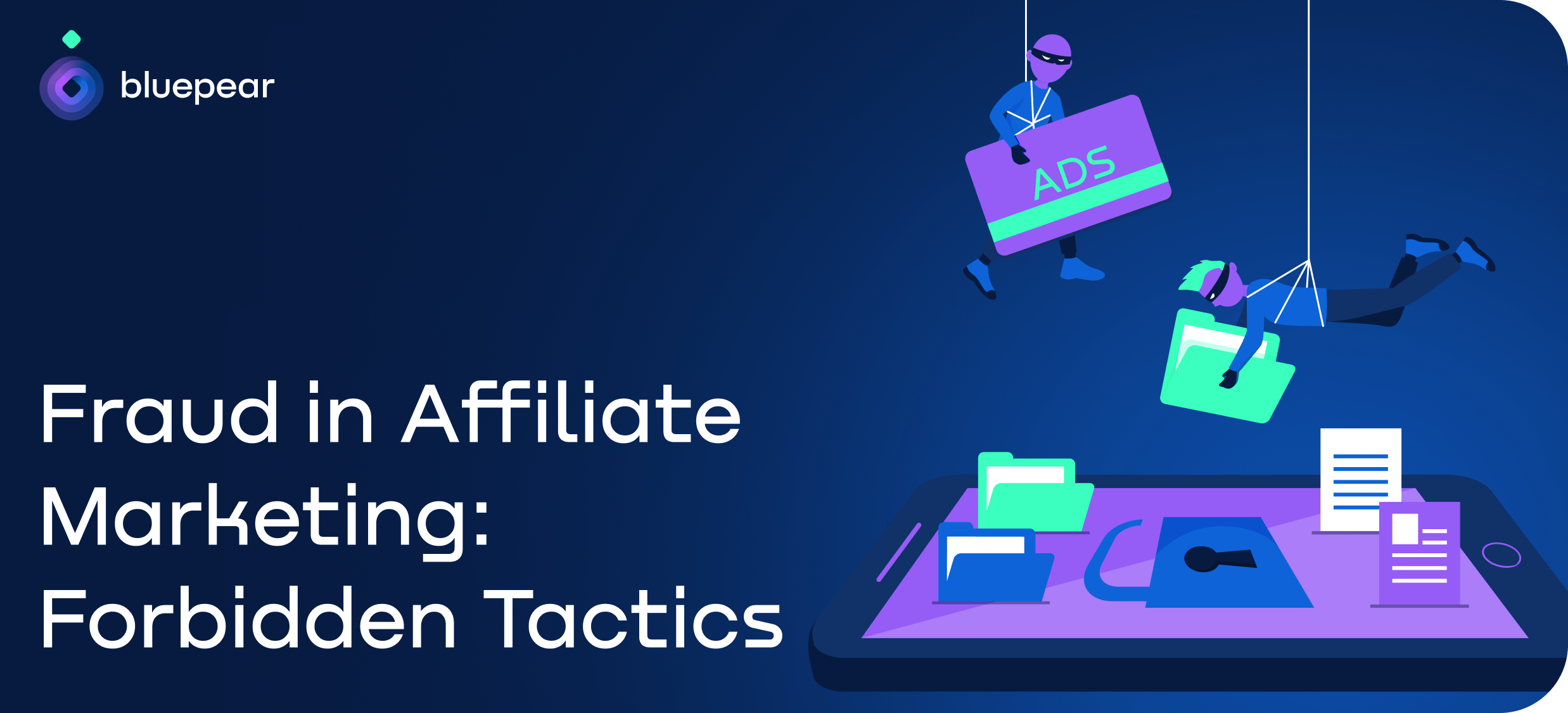
Contents
Fraud in affiliate marketing involves the use of prohibited tactics to guide customers through simple conversion points, such as running branded contextual ads, with the ultimate goal of receiving payouts from brands while minimizing their investment of money and effort. Such well-known fraudulent practices may include motivated traffic, bot traffic, and many other black hat techniques.
Meanwhile, honest advertisers invest time and resources into marketing campaigns to generate legitimate and relevant affiliate traffic that converts into customers. Fraudulent activities can compromise the integrity of these campaigns and result in wasted resources and damage to the brand's reputation.
Advertising fraud can be detected by analyzing statistics. Clear indicators include anomalies such as a large number of clicks from a single IP address, a high bounce rate, or a high conversion rate with a low retention rate.
For example, there are clear signs of bot traffic and motivated traffic that advertisers should know about. An abnormally high number of clicks from a single IP address is a red flag. Additionally, if there is a large number of visitors who quickly leave the website, it indicates potential fraud. Another telltale sign is a decrease in conversion rates, which can be a result of motivated traffic.
Advertisers are well aware of these types of fraudulent traffic and there are numerous tools available to combat them. It is easy to spot these anomalies by analyzing advertising metrics.
However, some forms of fraud are more difficult to detect, and may only be noticed through indirect signs, such as a decrease in click-through rates (CTR) or the cost per conversion from affiliate advertising being similar to the cost per conversion from in-house brand campaigns. These changes may not appear as anomalies, making them harder to notice without careful observation.
Advertisers should not only focus on obvious anomalies but also pay attention to indirect indicators, which can help uncover complex fraud techniques. By constantly monitoring their campaigns and using available tools to comprehensively analyze advertising metrics, they can effectively combat these fraudulent practices and ensure the success of their affiliate marketing campaigns.
Prohibited Types of Affiliate Traffic: Black Hat Techniques
Black hat techniques employed by dishonest affiliates can harm brand reputation and undermine the effectiveness of affiliate marketing strategies. While these tactics may not immediately impact key performance indicators, there are indirect signs to watch for, such as increased cost per click, decreased click-through rate, and similar conversion costs between partner advertisements and brand in-house campaigns. Detecting these changes can be challenging, as they may not appear as obvious anomalies.
To protect their brands from fraudulent activities, advertisers must be aware of various black hat techniques employed by unscrupulous affiliates. The black hat techniques can undermine the effectiveness of affiliate marketing traffic strategies and harm brand reputation. Let's discover some of the prohibited traffic tactics:
Ad Hijacking: Ad hijacking occurs when affiliates mimic a brand's ads and use affiliate tracking for commissions, often through brand bidding. This can lead users to believe that the ad is actually from the brand, resulting in potential deception and confusion.
URL Hijacking: URL hijacking occurs when a publisher declares in the real-time bidding that an ad will run on a specific domain, but is actually set to appear on a different, less favorable website. This technique, known as domain spoofing (or domain abuse), hides the actual domain from viewers and presents a misleading URL that appears to host a reputable site. Advertisers may mistakenly bid on these spoofed domains, leading to their ads appearing on unexpected and potentially harmful websites.
Cookie Stuffing: In cookie stuffing, affiliates use tracking technology in affiliate marketing to surreptitiously place multiple affiliate cookies on a user's device without their knowledge or consent. This falsely attributes the user's conversion to the fraudulent affiliate, resulting in unauthorized commissions and a distorted view of campaign performance.
Cloaking: Cloaking is one of the black hat marketing techniques used to hide the true nature of their promotion. They present different content to search engines and users, making it difficult for advertisers to detect unauthorized use of their brand name or intellectual property rights. Moreover, partners use cloaked websites to hide violations of the affiliate program rules, such as brand bidding. Cloaking makes it difficult to identify dishonest affiliates and identify violations.
Trademark Abuse: Apart from domain abuse, some affiliates engage in unauthorized use of trademarks in their advertising to mislead users and direct prohibited traffic to their own offers. This not only violates intellectual property laws but also damages the brand's reputation and dilutes its unique value proposition.
By protecting their brands against these black hat marketing techniques, advertisers can protect their investments, maintain brand integrity, and ensure that legitimate affiliate traffic strategies deliver the desired results.

Final words
As affiliate marketing continues to evolve, it is essential for brands to fortify themselves against prohibited types of traffic in affiliate marketing and brand bidding tactics. Advertisers must remain vigilant and implement affiliate marketing traffic strategies to detect and prevent fraud in their campaigns. By recognizing and understanding the various black hat techniques used by unscrupulous affiliates, advertisers can safeguard their brands, maintain the integrity of their campaigns, and maximize their return on investment.

